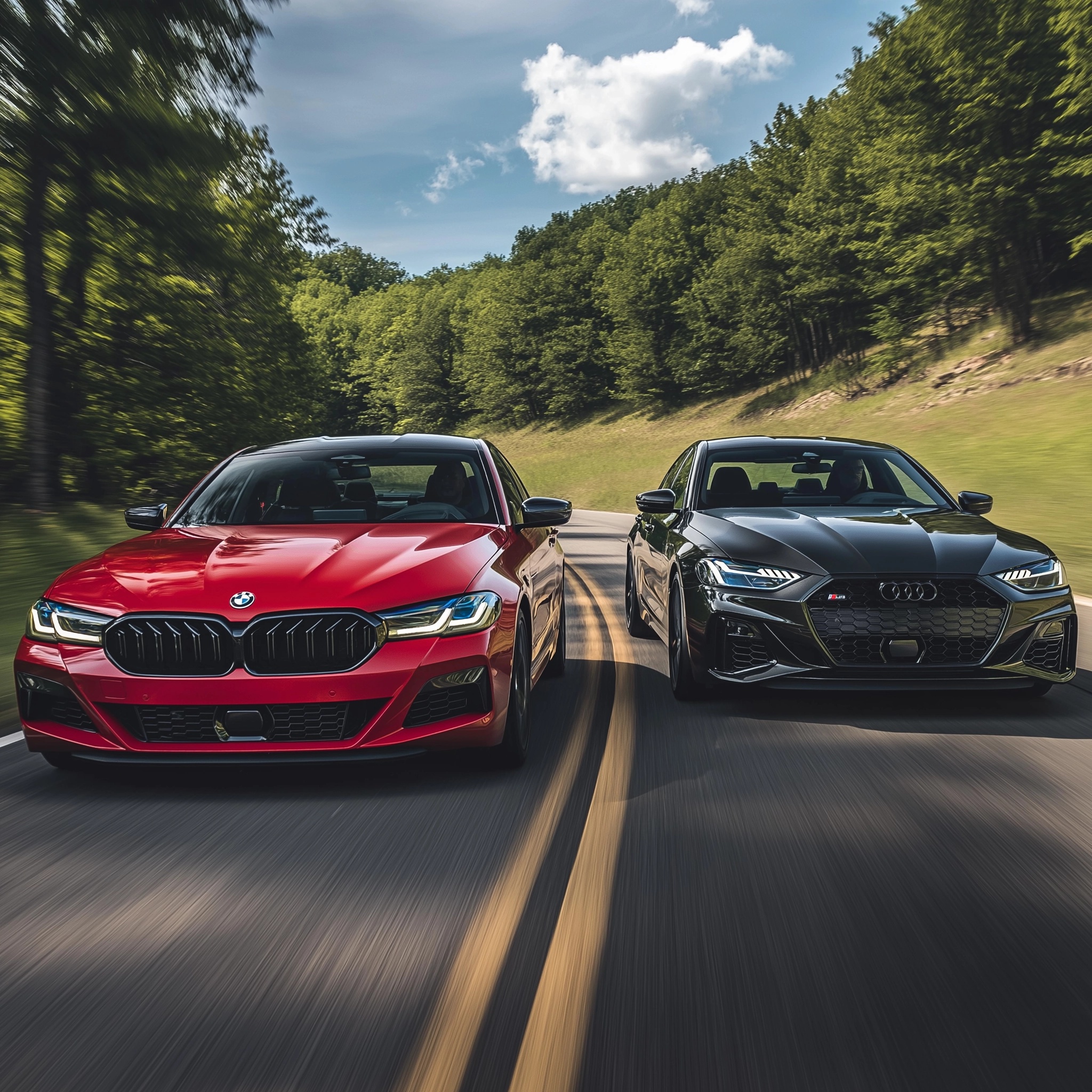The story of the BMW M5 began in the early 1980s. At the time, BMW’s Motorsport division (M) was building high-performance versions of their cars, but mostly focused on sports cars like the M1. The engineers at BMW had the bold idea of taking their luxurious 5 Series sedan and giving it a racing heart—the engine from the M1. The result? The E28 M5, introduced in 1984.
- Engine: 3.5L inline-six, derived from the BMW M1.
- Power: 286 hp (Europe) and 256 hp (US).
- Performance: 0-60 mph in about 6.5 seconds, one of the fastest sedans in the world at the time.
It was a wolf in sheep’s clothing—a car that looked like a family sedan but could keep up with sports cars. The E28 M5 was hand-built and is now considered a collector’s dream.
The 1990s – E34 M5 (1988–1995)
Next came the E34 M5, launched in 1988. This was the era when BMW started perfecting the formula. It was still a hand-assembled car but offered better build quality and even more refinement than its predecessor.
- Engine: 3.6L inline-six (upgraded to 3.8L later in Europe).
- Power: Initially 311 hp, later versions had up to 335 hp.
- Performance: 0-60 mph in 5.9 seconds (3.6L) and 5.7 seconds (3.8L).
It was known for its superb handling, partly thanks to advanced suspension systems, and it became a favorite among driving enthusiasts who wanted a balance of performance and luxury.
The 2000s – E39 M5 (1998–2003)
The E39 M5 is often considered the greatest M5 ever made, and it holds a special place in the hearts of enthusiasts. Introduced in 1998, it was the first M5 to feature a V8 engine, marking a shift towards more power and refinement.
- Engine: 4.9L V8.
- Power: 394 hp.
- Performance: 0-60 mph in 4.8 seconds.
The E39 combined raw power with a luxurious, well-crafted interior. It was a technological leap, featuring advanced systems like dynamic stability control. Critics and fans alike praised its handling, acceleration, and everyday usability. It could comfortably fit the family but was capable of hitting the racetrack on the weekends.
The V10 Era – E60 M5 (2005–2010)
BMW took things to the next level with the E60 M5, introducing a Formula 1-inspired V10 engine. This generation was a radical departure in design, featuring a more aggressive look and controversial SMG (sequential manual gearbox) transmission.
- Engine: 5.0L V10.
- Power: 500 hp.
- Performance: 0-60 mph in 4.1 seconds.
The V10 M5 was a monster, designed to provide supercar-like performance in a sedan body. While its SMG transmission divided opinion due to its jerky shifts in regular driving, enthusiasts loved its high-revving engine that screamed at 8,250 rpm. It was also packed with tech, including an adjustable suspension, throttle mapping, and stability control settings.
Back to V8 – F10 M5 (2011–2016)
The F10 M5, launched in 2011, marked BMW’s return to a V8 engine—but this time, it was turbocharged. This generation focused on more power and more comfort, but also on improved fuel efficiency compared to the thirsty V10.
- Engine: 4.4L twin-turbocharged V8.
- Power: 560 hp.
- Performance: 0-60 mph in just 3.7 seconds.
It was the first M5 to offer an optional all-wheel-drive system (xDrive in some markets), helping with traction and handling in less-than-ideal conditions. It combined monstrous speed with high-tech luxury, with features like adaptive cruise control and driver assistance systems. The F10 was capable of being a daily driver but could still tear up the track when needed.
The Modern Era – F90 M5 (2017–Present)
The current F90 M5 is a technological marvel. Introduced in 2017, it continued with the twin-turbo V8 but took the car’s capabilities to new heights. For the first time, the M5 featured standard all-wheel-drive (AWD), which could be switched to rear-wheel-drive for the purists who love drifting.
- Engine: 4.4L twin-turbo V8.
- Power: 600 hp (617 hp in the Competition model).
- Performance: 0-60 mph in a blistering 2.9 seconds.
The F90 is faster and more refined than any of its predecessors, with cutting-edge tech like adaptive M suspension, driver mode customization, and more. It’s a true supercar killer in the shape of a four-door sedan.

